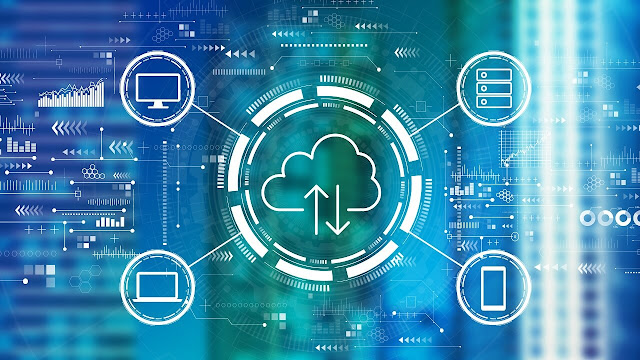Cloud Computing Explained: How the Cloud Powers Your Digital Life
Cloud Computing Explained: How the Cloud Powers Your Digital Life
In today’s fast-paced, digitally connected world, we rely on cloud computing every day—often without even realizing it. From checking your email and storing photos to streaming videos and collaborating on documents, the cloud plays a silent but crucial role. But what exactly is cloud computing, and how cloud computing works to make our digital lives easier and more efficient?
In this article, we’ll break down what cloud computing is, how it operates, and why it has become an essential backbone of the modern digital world.
What Is Cloud Computing?
Cloud computing refers to the delivery of computing services—like storage, processing power, databases, software, networking, and analytics—over the internet, commonly known as "the cloud." Instead of relying on a physical hard drive or local server, cloud computing enables users to access services and data from anywhere with an internet connection.
You’ve probably used cloud computing many times today already. Checked your Gmail? That’s the cloud. Uploaded a file to Google Drive or Dropbox? Cloud again. Watched Netflix or joined a Zoom meeting? Yes—powered by cloud infrastructure.
How Cloud Computing Works
To understand how cloud computing works, think of it as renting computing resources rather than owning them. Instead of buying expensive hardware or installing software locally, you use resources provided by large data centers operated by companies like Amazon Web Services (AWS), Microsoft Azure, or Google Cloud Platform (GCP).
Here’s a simplified breakdown of the process:
1. Data Centers and Servers
At the core of cloud computing are massive data centers filled with physical servers. These servers store your files, run your apps, and process your data. These facilities are maintained by cloud service providers who ensure uptime, scalability, and security.
2. Virtualization
Virtualization allows one physical server to run multiple “virtual machines” (VMs). Each VM operates like an independent computer with its own operating system and applications. This technology is what enables cloud providers to efficiently share resources and scale services based on user needs.
3. Internet Access
Cloud services are accessible via the internet. When you log into a cloud platform—whether it's Netflix, Microsoft 365, or Amazon Prime—you’re essentially sending a request to a remote server, which processes the request and returns the results (like streaming a video or saving a document).
4. Pay-as-You-Go Model
Cloud computing operates on a utility-based pricing model. You only pay for what you use, whether that’s storage space, CPU usage, or bandwidth. This model is especially attractive for startups, small businesses, and individual users who want enterprise-grade services without high upfront costs.
Types of Cloud Services
Cloud computing is usually categorized into three main service models:
1. IaaS (Infrastructure as a Service)
This is the most basic form. Providers offer virtualized computing resources like servers, storage, and networking. Users install their own software and manage everything except the physical infrastructure.
Examples: Amazon EC2, Google Compute Engine
2. PaaS (Platform as a Service)
PaaS provides a platform that allows developers to build, run, and manage applications without worrying about the underlying infrastructure.
Examples: Heroku, Google App Engine, Microsoft Azure App Services
3. SaaS (Software as a Service)
SaaS delivers ready-to-use software applications over the internet. Users don’t have to worry about installation, maintenance, or updates.
Examples: Gmail, Dropbox, Microsoft Office 365, Zoom
Why Cloud Computing Matters
Now that we understand how cloud computing works, let’s look at why it has become so integral to daily life:
1. Scalability
Whether you’re a YouTuber uploading one video or a company running an app with millions of users, cloud services can scale up or down based on your needs.
2. Accessibility
Because cloud services are internet-based, you can access them from virtually anywhere. This has revolutionized remote work, online education, and global collaboration.
3. Cost-Efficiency
Users don’t need to invest in expensive hardware or software. Cloud computing allows businesses to reduce IT costs, streamline operations, and launch products faster.
4. Data Backup and Recovery
With your files in the cloud, you’re less likely to lose data due to hardware failures. Cloud services often include built-in backup and disaster recovery features.
5. Security
While concerns about cloud security exist, major providers invest heavily in encryption, authentication, and compliance with data protection laws. For most users and businesses, cloud security exceeds what’s possible on personal devices or small servers.
Everyday Examples of Cloud Computing
Cloud computing might seem abstract, but its real-world applications are everywhere:
-
Email Platforms like Gmail and Outlook store messages and attachments in the cloud.
-
Streaming Services like Netflix and Spotify deliver movies and music from remote servers.
-
Collaboration Tools like Google Docs and Microsoft Teams let people edit and share files in real time.
-
Cloud Storage like Google Drive, Dropbox, and iCloud keep your files accessible across devices.
-
Smartphones sync photos, contacts, and apps through cloud platforms like Android (Google) and iOS (Apple iCloud).
The Future of Cloud Computing
As technology evolves, the cloud will continue to power more aspects of our lives. Trends like edge computing (bringing data processing closer to users), AI as a service, and hybrid cloud systems are shaping the next generation of cloud technologies.
More industries—from healthcare and finance to gaming and education—are adopting cloud infrastructure to innovate, grow, and meet the demands of an increasingly digital world.
Final Thoughts
Understanding how cloud computing works helps you appreciate the invisible engine behind much of our digital life. It’s not just a buzzword or tech trend—it’s a foundational shift in how we use technology, making it more accessible, efficient, and powerful.
From the photos you back up to the music you stream, cloud computing is the force quietly enabling the modern digital experience. Whether you’re a casual user or a business owner, the cloud is here to stay—and it’s only getting smarter.




Comments
Post a Comment